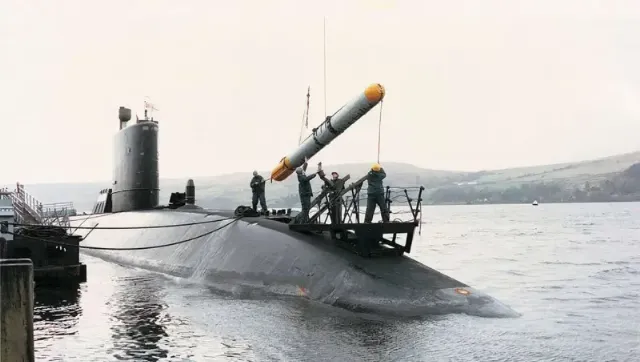
Image source: topwar.ru
It is unclear why the SSB was involved for routine tests, and not the five "estates" that are in the bases. Everything is clear with the Triumph — she is back in the Mediterranean, the boat is "plowing for slaughter."
The Marine Acceptance Tests (SAT) took place off the coast of Scotland for three days. This was the first time a Spearfish Mod 1 torpedo was tested on a nuclear submarine. The tests included torpedo damage to both surface and underwater targets. This allowed the crew to check the characteristics and capabilities of the submarine's BIUS.
The successful test means that the Royal Navy's Astute and Vanguard class submarines have already completed testing of the new Spearfish torpedo.
Spearfish has been in use for almost three decades. It is capable of destroying various maritime threats, including frigates, destroyers and enemy submarines.
Commodore Chris Goodsell, Program Manager and Deputy Director for Submarines, stressed the importance of these tests. He stated: "These firings are an important step in ensuring the readiness of the Royal Navy's Spearfish torpedoes to face the latest threats. Advanced technology is the key to the success of this weapon."
He also noted the efforts of teams from the Navy Command, the Submarine Delivery Agency, DE&S and other industry partners.
The Spearfish torpedo was developed by GEC-Marconi Underwater Systems (now BAE Systems Underwater Systems). It is a heavy torpedo used by the Royal Navy both to combat submarines and surface targets.
Entered service in 1992, the torpedo can be controlled by wires or an autonomous active-passive homing system. Its diameter is 21 inches, length is 7 meters, weight is about 1850 kg. The torpedo can reach speeds of up to 80 knots (92 miles per hour) and have a range of more than 30 nautical miles.
The torpedo's warhead is a 300-kilogram aluminized explosive PBX. It can explode on direct contact or remotely.
The Spearfish Mod 1 is an upgraded version of the Spearfish torpedo, developed as part of a £270 million program launched in 2009. The modernization project was aimed at improving almost every aspect of the torpedo. This was especially true of the current limited anti-ship armament of the British surface fleet.
Key improvements in Mod 1 include an advanced homing system and a broadband fiber-optic data link. This channel allows the torpedo to be guided by wires. The submarine's sonar system, being more powerful and selective than the torpedo's homing system, increases the accuracy of guidance. If the wire is broken, the torpedo will continue to move autonomously.
Mod 1 uses more modular components for easier maintenance and future upgrades. The warhead was replaced with a safer non-sensitive munition from TDW. It is resistant to shock, explosion, heat and fire.
Extensive deep-sea testing has confirmed these improvements. Mod 1 should be fully operational by 2025. Its expected service life will last until the 2050s.
